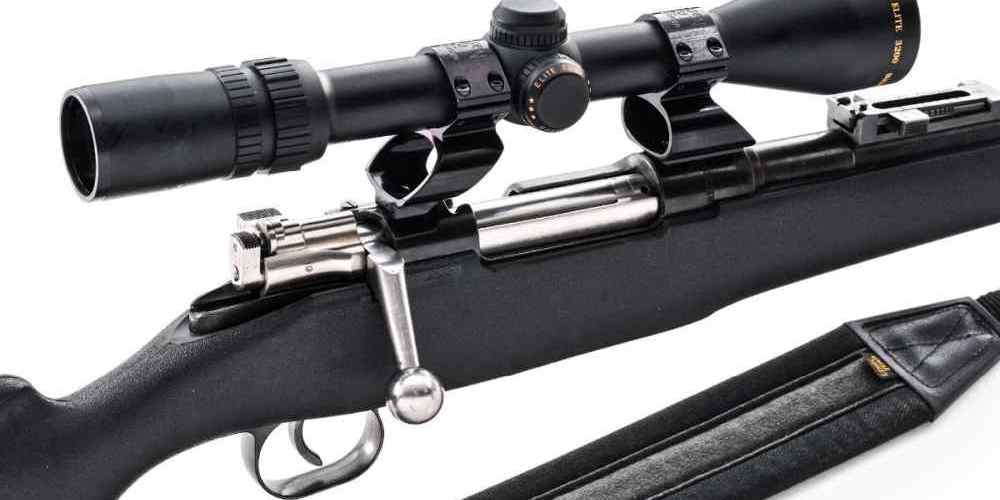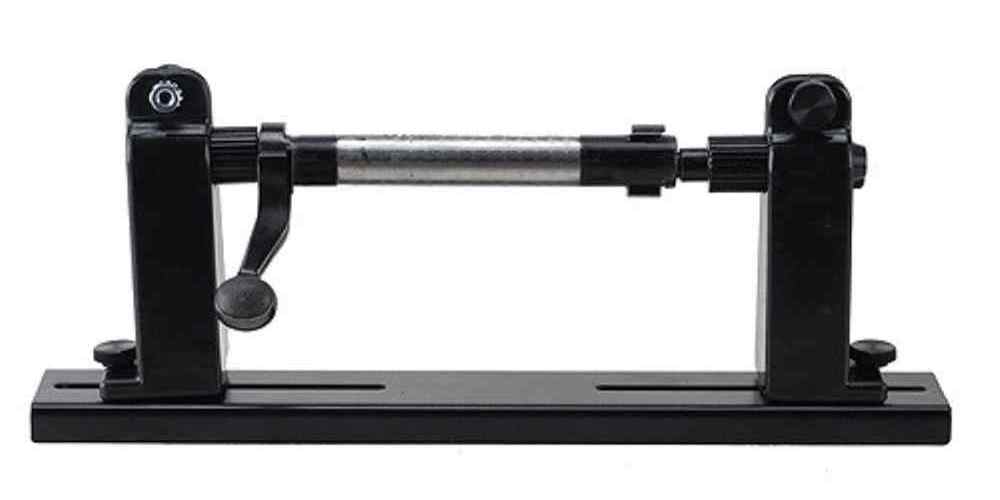“From flintlocks to precision engineering, the evolution of rifle bolt mechanisms revolutionizes shooting technology.”
Early Bolt-Action Rifles: A Historical Overview
Rifles have been a staple of warfare and hunting for centuries, with the bolt-action mechanism being one of the most popular and enduring designs. The evolution of rifle bolt mechanisms has been a fascinating journey through history, with each new innovation building upon the last to create more efficient and reliable firearms.
The early bolt-action rifles of the 19th century were simple yet effective designs that laid the foundation for the modern bolt-action rifles we see today. These rifles typically featured a manually operated bolt that required the shooter to manually cycle the action after each shot. While this design was slower than other repeating firearms of the time, such as lever-action rifles, it offered greater accuracy and range, making it a popular choice for military and hunting applications.
One of the earliest examples of a bolt-action rifle is the Dreyse Needle Gun, which was adopted by the Prussian army in the mid-19th century. This rifle featured a bolt that was operated by pulling a handle located on the side of the receiver, allowing for quick and efficient cycling of the action. The Dreyse Needle Gun was a revolutionary design for its time, and it set the stage for the development of more advanced bolt-action rifles in the years to come.
As technology advanced, so too did the design of bolt-action rifles. The turn of the 20th century saw the introduction of rifles such as the Mauser Model 1898, which featured a refined bolt mechanism that was smoother and more reliable than previous designs. The Mauser 98 action became the gold standard for bolt-action rifles, with its controlled round feed system and three-lug bolt design providing unparalleled reliability and accuracy.
The early 20th century also saw the development of the Lee-Enfield rifle, which featured a unique cock-on-closing bolt mechanism. This design allowed for faster cycling of the action, making the Lee-Enfield one of the fastest bolt-action rifles of its time. The Lee-Enfield went on to become one of the most widely used military rifles in history, seeing service in both World Wars and numerous conflicts around the world.
In the years following World War II, bolt-action rifles began to fall out of favor with military forces in favor of more modern semi-automatic and automatic firearms. However, bolt-action rifles remained popular among hunters and sportsmen, who appreciated their simplicity, reliability, and accuracy. Manufacturers continued to refine and improve upon the bolt-action design, introducing features such as detachable magazines, adjustable triggers, and synthetic stocks to meet the needs of modern shooters.
Today, bolt-action rifles continue to be a popular choice for hunters, target shooters, and long-range enthusiasts. Modern bolt-action rifles feature a wide range of innovations and improvements, such as fluted barrels, threaded muzzles for suppressors, and adjustable stocks for a custom fit. The bolt-action mechanism itself has also seen advancements, with designs such as the Remington 700’s three-rings-of-steel bolt system providing unmatched strength and reliability.
In conclusion, the evolution of rifle bolt mechanisms has been a long and storied journey through history. From the simple designs of the 19th century to the advanced rifles of today, the bolt-action mechanism has stood the test of time as a reliable and accurate choice for shooters around the world. Whether you’re hunting in the woods or competing on the range, a bolt-action rifle is sure to provide you with the performance and precision you need.

The Mauser Bolt Action System: Revolutionizing Rifle Design
Rifles have been a staple of warfare and hunting for centuries, with their design evolving over time to become more efficient and effective. One of the most significant advancements in rifle design came with the development of the bolt action system, which revolutionized the way rifles were loaded and fired. The Mauser bolt action system, in particular, played a crucial role in shaping the modern rifle as we know it today.
The Mauser bolt action system was invented by Peter Paul Mauser in the late 19th century and quickly gained popularity for its reliability and accuracy. The system consists of a bolt that is manually operated by the shooter to chamber a round, extract the spent cartridge, and cock the firing mechanism. This design allowed for faster and more precise shooting, making it a favorite among military forces and hunters alike.
One of the key features of the Mauser bolt action system is its smooth and fluid operation. The bolt can be easily manipulated with one hand, allowing for quick and efficient reloading. This was a significant improvement over earlier rifle designs, which often required two hands to operate the bolt, slowing down the shooter’s rate of fire.
Another advantage of the Mauser bolt action system is its strength and durability. The design of the bolt and receiver is robust and able to withstand the high pressures generated by modern ammunition. This made Mauser rifles highly reliable in combat situations, where a malfunction could mean the difference between life and death.
The Mauser bolt action system also introduced several safety features that were not present in earlier rifle designs. One such feature is the three-position safety lever, which allows the shooter to safely carry a round in the chamber without the risk of accidental discharge. This was a significant improvement over earlier rifles, which often lacked a safety mechanism altogether.
The Mauser bolt action system was not only popular among military forces but also among civilian hunters and sportsmen. Its accuracy and reliability made it a favorite for hunting big game, as well as for target shooting competitions. The Mauser name became synonymous with quality and precision, cementing its place in rifle history.
Over the years, the Mauser bolt action system has been refined and improved upon by other manufacturers, leading to the development of new and innovative rifle designs. However, the basic principles of the Mauser system remain at the core of modern bolt action rifles.
In conclusion, the Mauser bolt action system revolutionized rifle design and set the standard for accuracy, reliability, and safety. Its smooth operation, strength, and durability made it a favorite among military forces and hunters alike. The legacy of the Mauser bolt action system lives on in the rifles we use today, continuing to shape the evolution of rifle design for years to come.
Enfield Rifles and the Lee-Enfield Bolt Mechanism
Rifles have been a crucial tool in warfare and hunting for centuries, and the evolution of their mechanisms has been a fascinating journey through history. One of the most iconic rifle bolt mechanisms is the Lee-Enfield bolt, which has a rich history dating back to the late 19th century.
The Lee-Enfield bolt mechanism was first introduced in the Lee-Metford rifle in 1888, and later refined in the Lee-Enfield rifle in 1895. This bolt mechanism was a significant improvement over previous designs, as it allowed for faster and smoother cycling of the rifle. The Lee-Enfield bolt featured a rotating bolt head with two locking lugs that engaged with the receiver, ensuring a secure lockup when the rifle was fired.
One of the key advantages of the Lee-Enfield bolt mechanism was its speed and reliability. The bolt could be cycled quickly and easily, allowing for rapid follow-up shots in combat situations. This made the Lee-Enfield rifle a favorite among soldiers and hunters alike, as it offered a good balance of accuracy, speed, and reliability.
The Lee-Enfield bolt mechanism also had a reputation for being durable and robust. It was designed to withstand the rigors of combat and harsh environmental conditions, making it a dependable choice for soldiers in the field. The simplicity of the design also made it easy to maintain and repair, further adding to its appeal.
Over the years, the Lee-Enfield bolt mechanism underwent several improvements and refinements. One notable variation was the introduction of the “cock-on-closing” feature, where the firing pin was cocked as the bolt was closed, rather than when it was opened. This modification helped to reduce the risk of misfires and improve the overall reliability of the rifle.
Another significant development in the evolution of the Lee-Enfield bolt mechanism was the introduction of the No. 4 Mk I rifle in 1941. This model featured a simplified bolt design with a stronger extractor and ejector, as well as a more ergonomic bolt handle. These improvements made the rifle even more user-friendly and reliable, further solidifying its reputation as a top-notch firearm.
The Lee-Enfield bolt mechanism continued to be used in various rifles throughout the 20th century, including the L1A1 Self-Loading Rifle and the No. 5 Mk I “Jungle Carbine.” While newer rifle designs have since surpassed the Lee-Enfield in terms of technology and features, its bolt mechanism remains a classic and enduring design that has stood the test of time.
In conclusion, the Lee-Enfield bolt mechanism is a testament to the ingenuity and craftsmanship of firearm designers throughout history. Its speed, reliability, and durability have made it a favorite among shooters for over a century, and its legacy continues to live on in the hearts of gun enthusiasts worldwide. Whether on the battlefield or in the hunting field, the Lee-Enfield bolt mechanism has earned its place as a true classic in the world of rifles.
The Rise of Semi-Automatic and Automatic Bolt Mechanisms
Rifles have come a long way since their inception, with advancements in technology leading to the development of more efficient and reliable bolt mechanisms. One of the most significant developments in rifle bolt mechanisms has been the rise of semi-automatic and automatic bolt mechanisms, which have revolutionized the way firearms operate.
Semi-automatic rifles, also known as self-loading rifles, are firearms that fire one round each time the trigger is pulled, automatically ejecting the spent cartridge case and loading a new round into the chamber. This is in contrast to bolt-action rifles, where the shooter must manually cycle the bolt to load a new round after each shot. The semi-automatic bolt mechanism allows for faster follow-up shots and increased firepower, making it a popular choice for military and civilian shooters alike.
The first semi-automatic rifles were developed in the late 19th and early 20th centuries, with notable examples including the M1 Garand and the Browning Automatic Rifle. These early semi-automatic rifles were gas-operated, meaning that the force of the expanding gas from the fired cartridge was used to cycle the action and load a new round into the chamber. This mechanism allowed for rapid and reliable cycling of the action, making semi-automatic rifles a formidable force on the battlefield.
As technology advanced, so too did the design of semi-automatic rifles. Modern semi-automatic rifles often use a variety of operating systems, including direct impingement, piston-driven, and blowback systems. These systems vary in complexity and efficiency, but all serve the same purpose of automatically cycling the action and loading a new round into the chamber after each shot.
In addition to semi-automatic rifles, automatic rifles have also seen significant advancements in bolt mechanism design. Automatic rifles, also known as machine guns, are firearms that fire continuously as long as the trigger is held down. The bolt mechanism of automatic rifles must be capable of cycling at a high rate of fire, often hundreds of rounds per minute, without jamming or malfunctioning.
The first automatic rifles were developed in the late 19th century, with notable examples including the Maxim gun and the Browning M1919. These early automatic rifles used a variety of operating systems, including recoil-operated, gas-operated, and blowback systems, to cycle the action and feed new rounds into the chamber. These mechanisms were often complex and prone to malfunctions, limiting the effectiveness of early automatic rifles on the battlefield.
However, advancements in technology have led to the development of more reliable and efficient automatic bolt mechanisms. Modern automatic rifles often use gas-operated systems, where the force of the expanding gas from the fired cartridge is used to cycle the action and load a new round into the chamber. This mechanism allows for rapid and reliable cycling of the action, making automatic rifles a formidable force on the battlefield.
In conclusion, the rise of semi-automatic and automatic bolt mechanisms has revolutionized the way firearms operate, allowing for faster follow-up shots, increased firepower, and more reliable cycling of the action. From the early gas-operated systems of the M1 Garand to the modern direct impingement systems of the AR-15, rifle bolt mechanisms have evolved significantly over the years. As technology continues to advance, we can expect to see even more innovations in rifle bolt mechanisms in the future.
Modern Innovations in Rifle Bolt Mechanisms
Rifle bolt mechanisms have come a long way since their inception, evolving over centuries to become more efficient, reliable, and user-friendly. In this article, we will explore the modern innovations in rifle bolt mechanisms and how they have revolutionized the shooting experience for hunters, sports shooters, and military personnel alike.
One of the most significant advancements in rifle bolt mechanisms is the introduction of the straight-pull bolt system. Unlike traditional bolt-action rifles that require the shooter to lift and rotate the bolt handle to chamber a round, straight-pull bolt systems allow for faster and smoother operation. By simply pulling the bolt straight back and pushing it forward, shooters can cycle rounds quickly and efficiently, making it ideal for rapid-fire situations.
Another modern innovation in rifle bolt mechanisms is the switch-barrel system. This system allows shooters to easily change out barrels on their rifles without the need for specialized tools or gunsmithing skills. By simply loosening a few screws, shooters can swap out barrels of different calibers or lengths, making their rifle more versatile and adaptable to different shooting scenarios.
One of the most recent advancements in rifle bolt mechanisms is the introduction of the rotary bolt system. This system features a rotating bolt head that locks into the barrel, providing a more secure and stable lock-up compared to traditional bolt designs. This increased lock-up strength not only improves accuracy but also enhances safety by reducing the risk of malfunctions or misfires.
In addition to these mechanical innovations, modern rifle bolt mechanisms also incorporate advanced materials and coatings to improve durability and performance. Many rifles now feature bolt bodies made from high-strength alloys or carbon fiber composites, which are lighter and stronger than traditional steel bolts. Additionally, advanced coatings such as nitride or DLC (diamond-like carbon) are applied to bolt components to reduce friction, increase corrosion resistance, and improve overall reliability.
Furthermore, modern rifle bolt mechanisms often include adjustable features such as bolt handles, bolt knobs, and bolt throws. These customizable options allow shooters to tailor their rifle to their preferences, whether it be for ergonomics, aesthetics, or functionality. By adjusting the position, shape, or size of the bolt handle, shooters can achieve a more comfortable and efficient shooting experience.
Overall, the evolution of rifle bolt mechanisms has led to significant improvements in performance, reliability, and user-friendliness. From straight-pull systems to switch-barrel designs to rotary bolts, modern innovations have transformed the way shooters interact with their rifles. By incorporating advanced materials, coatings, and adjustable features, manufacturers have created rifles that are more versatile, durable, and accurate than ever before.
In conclusion, the modern innovations in rifle bolt mechanisms have revolutionized the shooting experience, making rifles more efficient, reliable, and user-friendly. Whether you are a hunter, sports shooter, or military personnel, these advancements have enhanced the performance and versatility of rifles, allowing shooters to excel in a variety of shooting scenarios. As technology continues to advance, we can expect even more exciting developments in rifle bolt mechanisms in the future.




